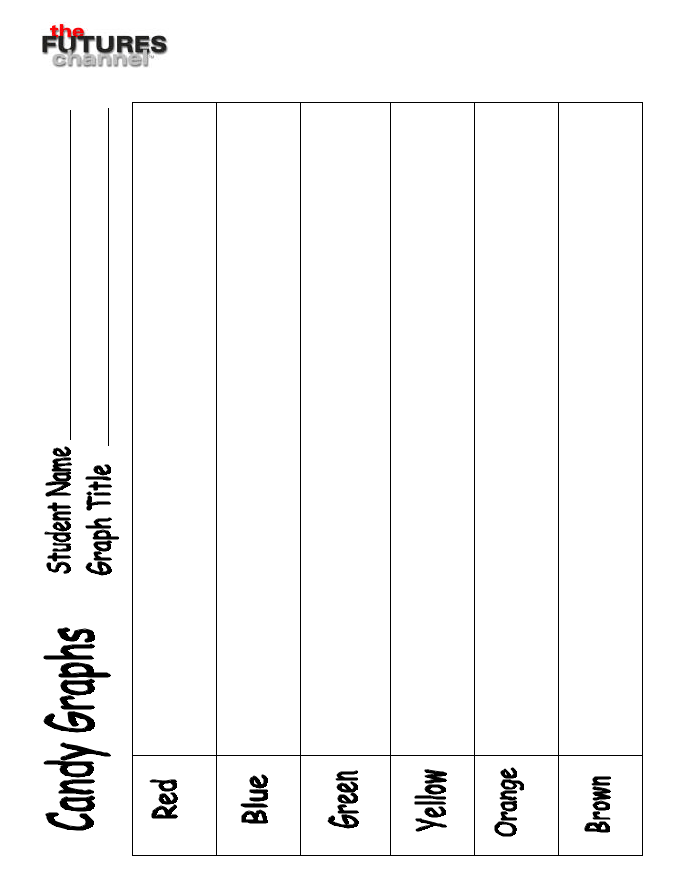Mathematics
Grade Levels: 3rd Grade, 4th Grade, 5th Grade, 6th Grade,
Topics: StatisticsProbability
Common Core State Standard: 2.MD.10, 6.SP.4, 6.SP.5a, 7.SP.1, 7.SP.5, 7.SP.6, 7.SP.7,
Concepts:
· Sample (statistics)
· Probability
· Understands the purpose and value of organizing information in charts
· Understands the effect of sample size on the accuracy of measured probabilities
· a one-gallon glass jar filled with colored peanut M&M’s or similar multi-colored candy
For each team:
· 4 individual packs of the same type of candy
· 4 “Candy Graph” forms (with double-stick tape on each column)
· One sheet of normal graph paper
Lesson:
Procedure: This activity is best done with students working in teams of four.
Begin the lesson by showing students the large jar full of candies. Ask, “If I choose a piece of candy from this jar, what color do you think it will be?” Lead discussion to the best way to get an answer, and the idea that one way is to count all of the different colors and see which one is the most.
Suggest that instead of counting all of the candies in the jar, each student should count the colors in a single pack of candy. Ask students what would be the best way to show the results of doing that, leading them to the idea of making graphs.
Tell students they are each going to make graphs for one pack of candy, but these are going to be special graphs because they are going to use the pieces of candy as parts of the graphs.
Once this is done, ask students to look at their charts and compare them to charts of other students in their team, and tell you what they observe.
Student observation should lead to the realization that the packs have different amounts of each color, and so you cannot predict very well by looking at the graph for one pack.
Now have students of each team make a combined graph showing the total for all candies for that team (have students make a normal bar graph). When they have done so, have the class examine the bar graphs for each team and tell what they observe. (The charts for each team should be much more similar to each other than the charts that individual students made, since the sample is larger.)
At this point, review the concept of “sample”, which is the number of candies that are being counted. Be sure that students understand that the sample in the second step consists of all of the candies for their team, while the sample in the first step was only the candies in their own packs.
Make a large table on the board showing all of the results. Help students to observe that the results with the larger sample size are more similar to each other.
Based on this data, ask students to reconsider their answer to the question asked at the beginning of the lesson, and tell you what they think it is now. Then have a student draw a candy from the jar. Whatever the color drawn, discuss the point that though the students were able to determine that red the color that was most likely to be drawn, it was not a certainty.
Repeat the last step (taking a piece of candy out of the jar) several times, to show that the “most likely” color is, in fact, the one that is most often selected. Ensure students understand that the “probability” of something happening doesn’t tell you what will happen in a single event, but does tell you about how many times that a given result will occur out of a large number of events.

